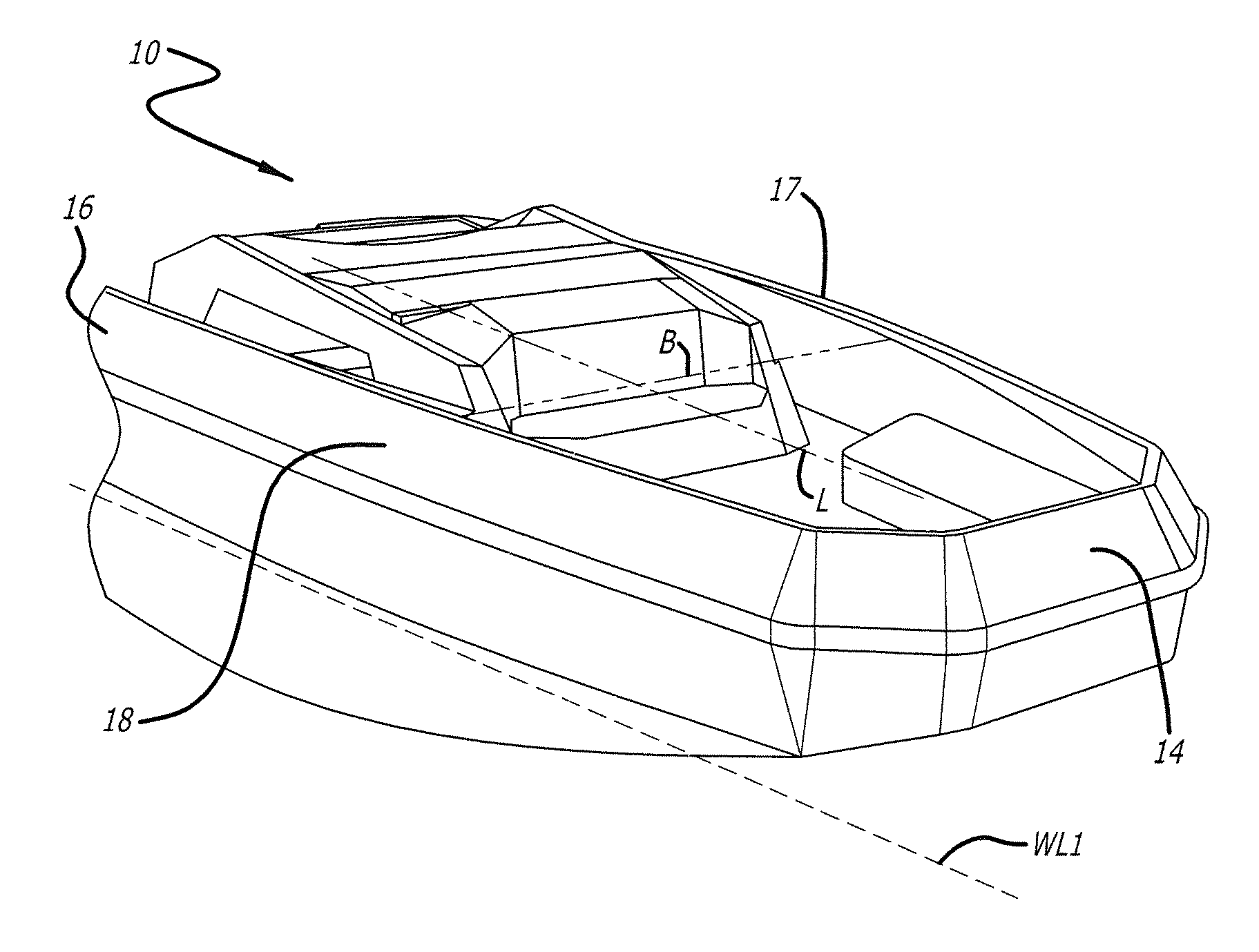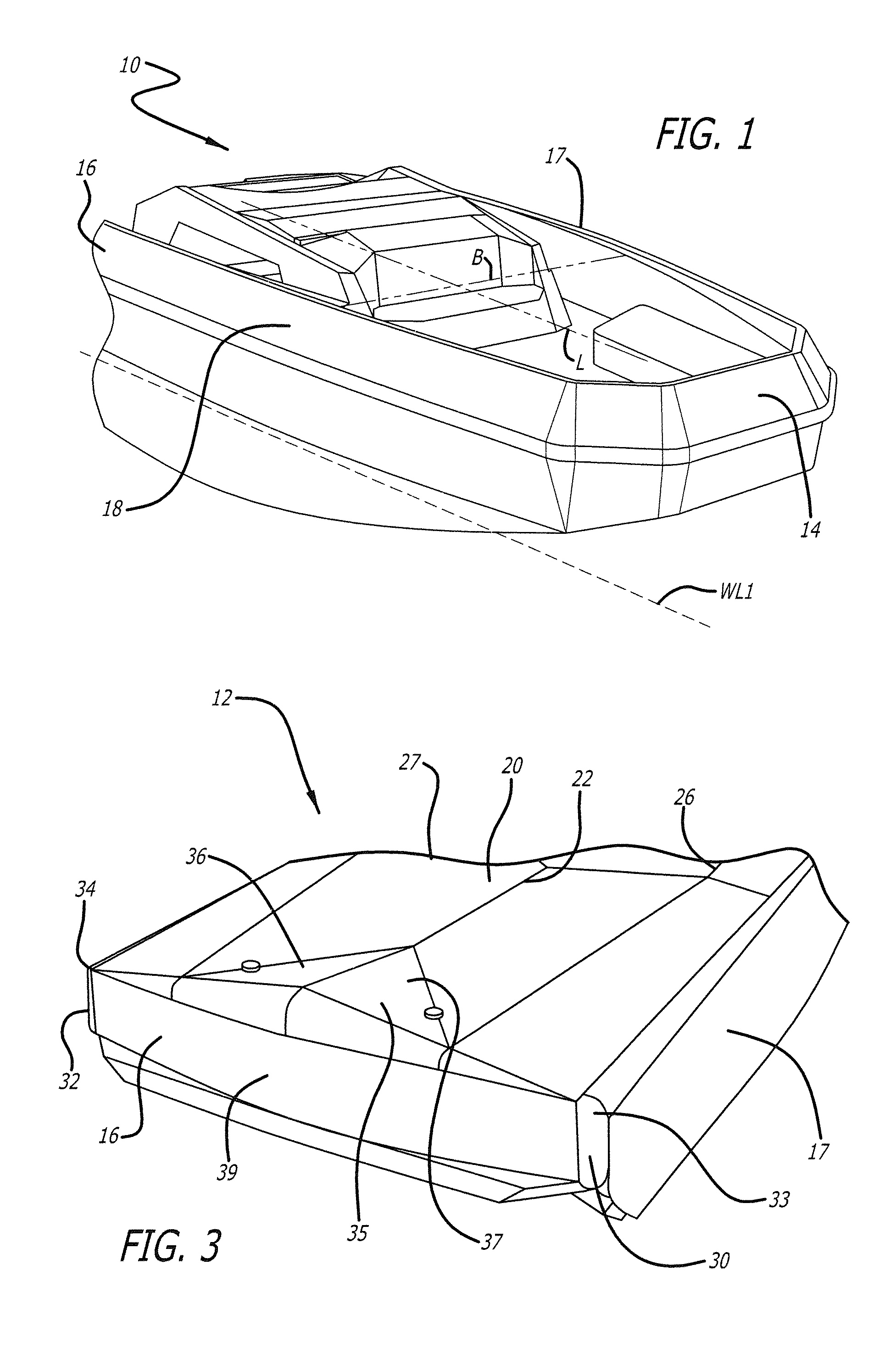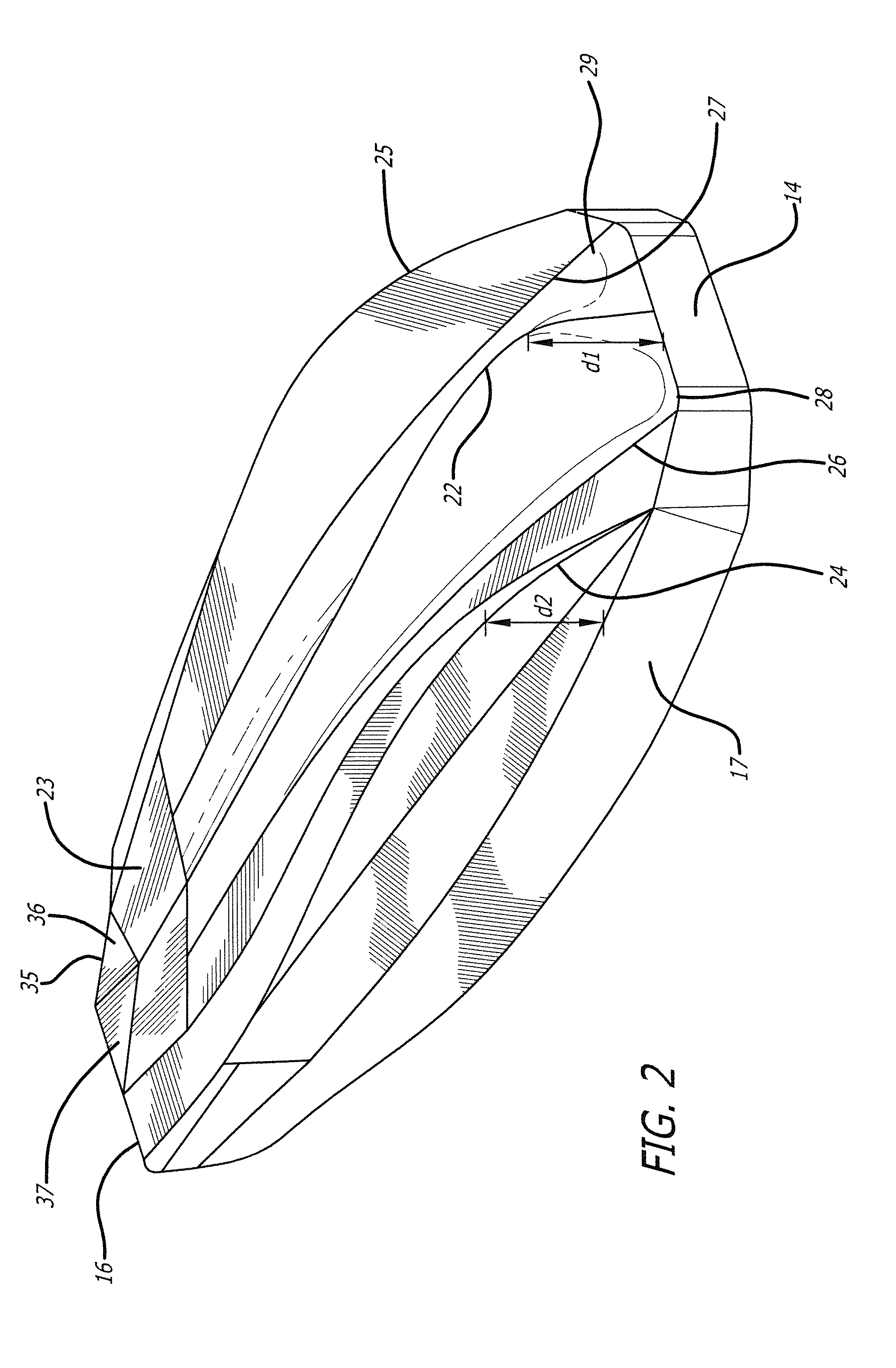Wakesurfing boat and hull for a wakesurfing boat
a wakesurfing boat and wakesurfing technology, applied in the field of boats and boat hulls, can solve the problems of insufficiently long wake, insufficiently well-shaped, and long-lasting wake, and inability to generate sufficient large wake, so as to increase the volume of water, increase the ballast, and increase the lwl
- Summary
- Abstract
- Description
- Claims
- Application Information
AI Technical Summary
Benefits of technology
Problems solved by technology
Method used
Image
Examples
Embodiment Construction
[0001]The present application is a continuation-in-part of U.S. application Ser. No. 13 / 315,696, filed Dec. 9, 2011, the contents of which are incorporated herein by reference, and claims priority thereto under 35 U.S.C. 120.
FIELD OF THE INVENTION
[0002]The present invention relates to boats and boat hulls. More particularly, the present invention relates to wakesurfing boats, and hulls used for wakesurfing boats.
BACKGROUND OF THE INVENTION
[0003]Wakesurfing is a sport that is growing in popularity. A wakesurfer, initially being towed behind a boat via a tow rope, rises to his feet on a surf board in a body of water (e.g., an ocean, a sea, a lake, or a river) similar to a waterskier or a wakeboarder. In order to achieve an ideal wakesurfing ride, the boat should generate in its wake a wave that mimics as closely as possible, in view of the type of body of water, a size, a shape, a power, and a duration, of an ocean wave rising, cresting, and breaking near a beach, enabling the surfer ...
PUM
 Login to View More
Login to View More Abstract
Description
Claims
Application Information
 Login to View More
Login to View More - R&D
- Intellectual Property
- Life Sciences
- Materials
- Tech Scout
- Unparalleled Data Quality
- Higher Quality Content
- 60% Fewer Hallucinations
Browse by: Latest US Patents, China's latest patents, Technical Efficacy Thesaurus, Application Domain, Technology Topic, Popular Technical Reports.
© 2025 PatSnap. All rights reserved.Legal|Privacy policy|Modern Slavery Act Transparency Statement|Sitemap|About US| Contact US: help@patsnap.com



